Rigid-Flex PCB
What is a Rigid-Flex PCB

Rigid-Flex PCBs integrate the robustness of rigid PCBs with the adaptability of flexible circuits, allowing for dynamic electronic designs that fit into tight spaces or require complex shapes. This technology facilitates more compact devices by eliminating the need for multiple connectors and reduces the risk of connection failures, enhancing product reliability. They’re particularly beneficial in industries where device miniaturization and reliability are critical, such as aerospace, medical, and consumer electronics. Rigid-Flex PCBs represent a significant advancement in PCB design, offering a versatile solution for challenging engineering requirements.
Rigid-Flex vs. Rigid PCBs
Rigid-Flex PCBs offer a design complexity that goes beyond traditional rigid boards by utilizing 3D space, allowing designers to fold, twist, and roll the flexible parts to fit specific shapes within a device’s final form. This capability for three-dimensional design provides greater spatial efficiency compared to rigid PCBs, which are limited to a flat, two-dimensional plane. Rigid-Flex technology thus enables more innovative and space-efficient layouts, making it ideal for applications where space is at a premium and flexibility is required.

Unveiling Kingsignal’s Rigid-Flex PCB Manufacturing Excellenc
Empowering your innovations with our advanced Rigid-Flex PCB manufacturing capabilities, where precision meets flexibility
Surface Finishes:
- ENIG
- Electric gold
- IM-Ag
- Electric Ag
- HASL
- HASL-LF
- IM-Sn
- Electric Sn
- OSP
- Caborn
- PtNI-Pd-AU
Standard flex materials:
- Polyimide (Kapton) 0.5 mil to 5 mils (.012mm – .127mm)
- Adhesiveless copper clad base material 1 mil to 5 mils
- Flame retardant laminate, base material, and Coverlay
- High performance epoxy laminate and prepreg
- High performance polyimide laminate and prepreg
- UL and RoHS compliant material on request
- High Tg FR4 (170+ Tg), polyimide (260+ Tg)
PCB attributes
Rigid-flex
Flex
Min Layer Count
1
1
Max Layer Count
32
12
Min Core thickness
.002″ (.051 mm)
.001″ (.025 mm)
Max Finished Copper Weight (I/L)
3 oz (89 ml)
2 oz (59 ml)
Max Finished Copper thickness (O/L)
9 micron (.009 mm) (only for O/L)
12 micron (.012 mm)
Max Panel Size
12×18
12×18
Smallest Mechanical Drill Diameter
.0071″ (.180 mm)
.0079″ (.201 mm)
Smallest Laser Drill Diameter
.005″ (.127 mm)
No
Min Finished Hole Size
.006″ (.152 mm)
.006″ (.152 mm)
Max through Hole Aspect Ratio
10:1
10:1
Max Blind Via Aspect Ratio
.75:1
.75:1
Min Trace and Space
≥ .0035”(.089 mm)(rigid)
≥ .0035”(.089 mm)
Min Pad Size for Test
.005” (.127 mm) (rigid)
.016″ (.406 mm)
Process Pad Diameter
D + .014″ (.356 mm) (1-mil (.025 mm) annular ring)
D + .014″ (.356 mm) (1-mil (.025 mm) annular ring)
Stacked Vias
No
No
Min Wire Bond Pad Size
> .006″ (.152 mm)
> .006″ (.152 mm)
Controlled Impedance Tolerance
5%
10%
Solder Mask Registration
Within .002″ (.051 mm)
Within .002″ (.051 mm)
Solder Mask Feature Tolerance
.001″ (.025 mm)
.001″ (.025 mm)
Solder Mask Min Dam Size
.001″ (.025 mm)
.004″ (.102 mm)
Min Diameter Route Cutter Available
.024″ (.610 mm)
.019″ (.483 mm)
Mechanical Routed Part Size Tolerance
.010″ (.254 mm)
.003″ (.076 mm)
Bow and Twist Tolerance
As per spec
N/A
Thickness Tolerance
10%
+/- .002″ (.051 mm)
Sequential Laminations
2
N/A
Buried Vias
Yes
Yes
Blind Vias
Yes
Yes
Conductive Filled Vias
Yes
No
Non Conductive Filled Vias
Yes
No
Surface finishes
Rigid-flex
Flex
HASL (Vertical or Horizontal)
Yes
Yes
Lead Free HASL
Yes
Yes
OSP (Shikoku F2)
Yes
Yes
OSP (Entek)
Yes
Yes
ENIG (Electroless Nickel/Immersion Gold)
Yes
Yes
Immersion Silver
Yes
Yes
Immersion White Tin
NO
NO
Tin Nickel
NO
NO
Electrolytic Soft Gold
Yes
Yes
Electrolytic Hard Gold
Yes
Yes
Selective Gold
Yes
Yes
Solder mask colors
Rigid-flex
Flex
Amber
Yes
Yes
Green
Yes
Yes
Black
Yes
No
Red
Yes
No
Blue
Yes
No
Yellow
Yes
No
White
Yes
No
Clear
Yes
No
Bright White
Yes
No
Purple
Yes
No
Legend
Rigid-flex
Flex
White
Yes
Yes
Fab
Rigid-flex
Flex
Routed Array
Yes
Yes
V Score, Edge to Copper
.01″ (.254 mm)
.002″ (.051 mm)
V Score Angles
Yes
No
Countersink
Yes
Yes
Counterbore
Yes
Yes
Bevel
Yes
Yes
Milling
Yes
Yes
Edge Castellation
Yes
Yes
Edge Plating
Yes
Yes
Heatsinks
No
No
Electrical test
Rigid-flex
Flex
10 Volt
Yes
Yes
40 Volt (Burn-In Boards)
Yes
Yes
250 Volt
Yes
Yes
500 Volt
Yes
Yes
Laminate materials
Rigid-flex
Flex
Flexible Poyimide
Yes
Yes
Arlon 85NT
No
No
Bergquist
No
No
Hybrid Constructions
Yes
Yes
Isola FR406
Yes
Yes
Isola FR406
Yes
Yes
Isola FR408 HR
Yes
Yes
Isola P95
Yes
Yes
Isola P96
Yes
Yes
Iteq IT180
Yes
Yes
Panasonic R1766
Yes
Yes
Panasonic R1755
Yes
Yes
Panasonic Megtron
Yes
Yes
Nelco N4000-13
Yes
Yes
Nelco N4000-29
Yes
Yes
Nelco BT N5000
Yes
Yes
Nelco N7000-2
Yes
Yes
No Flow Prepreg
Yes
Yes
Isola 370HR
Yes
Yes
Isola 370HR
Yes
Yes
Polyclad Getek
No
No
PSA Bond Film
Yes
Yes
Rogers 3000 Series
No
No
Rogers R4000 Series
No
No
Rogers 5000 Series
No
No
Rogers 6000 Series
No
No
Rogers TMM
No
No
Available reports
Rigid-flex
Flex
Microsection
Yes
Yes
Solderability
Yes
Yes
X-Ray Fluorescence
Yes
Yes
Ionic Contamination
Yes
Yes
Time Domain Reflectometry Test (TDR)
Yes
Yes
FAI
Yes
Yes
Certificate of Compliance
Yes
Yes
UL
Rigid-flex
Flex
94VO
Yes
Yes
PCB classifications mil-spec
Rigid-flex
Flex
MIL-PRF-55110
No
No
MIL-PRF-31032/1
No
No
MIL-PRF-31032/2
No
No
IPC 6012, Class 1, 2 and 3
Yes
Yes
ISO 9001:2015
Yes
Yes
ISO 13485:2016
Yes
Yes
Showcasing Our Rigid-Flex PCB Innovations
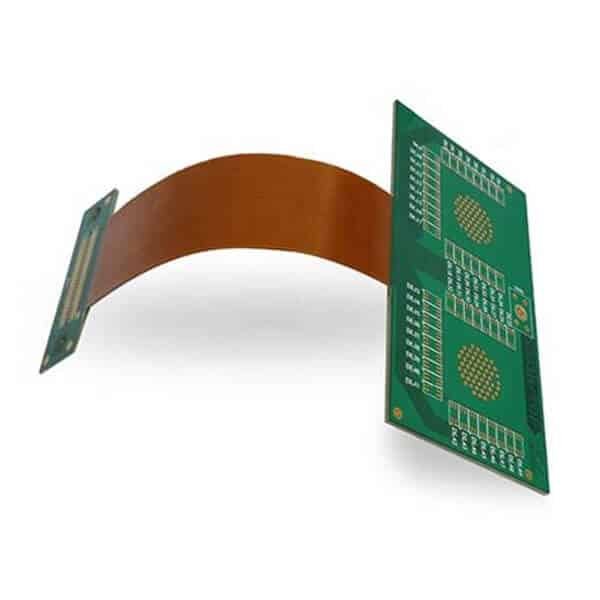
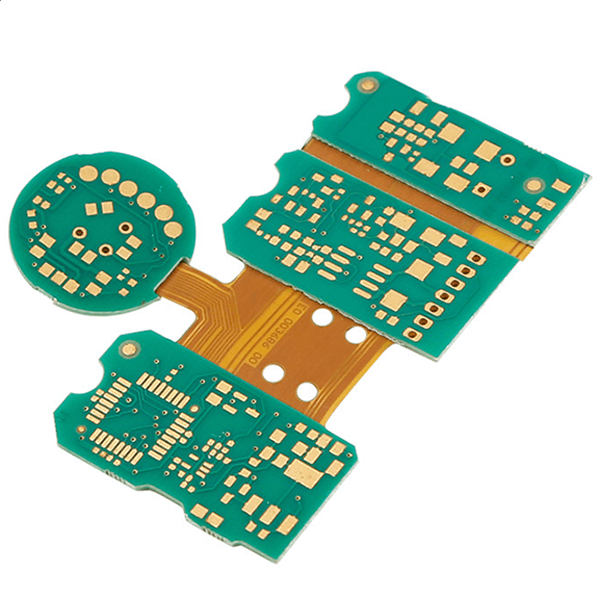

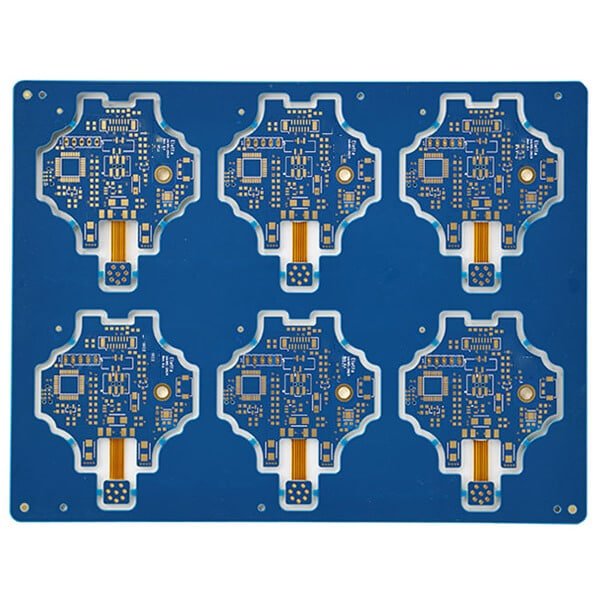
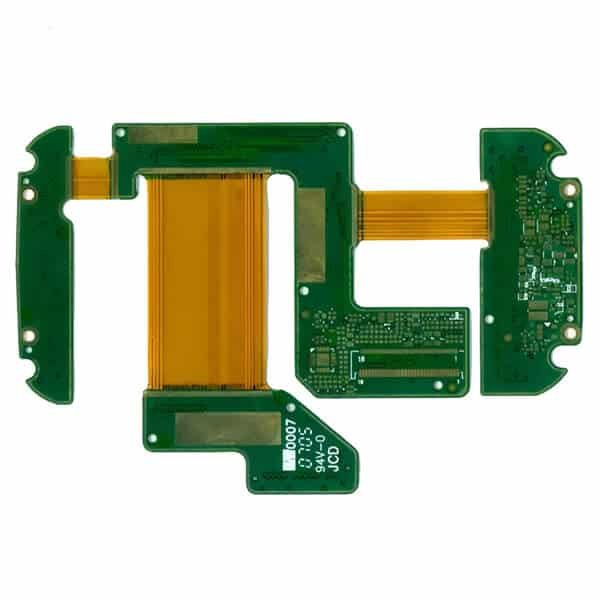
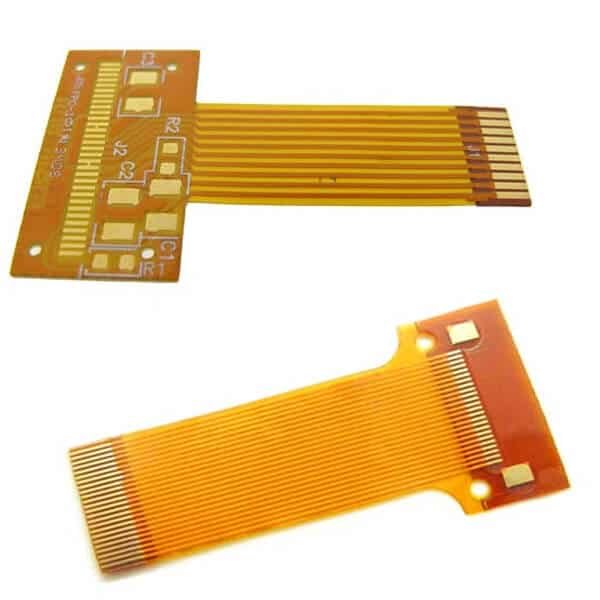

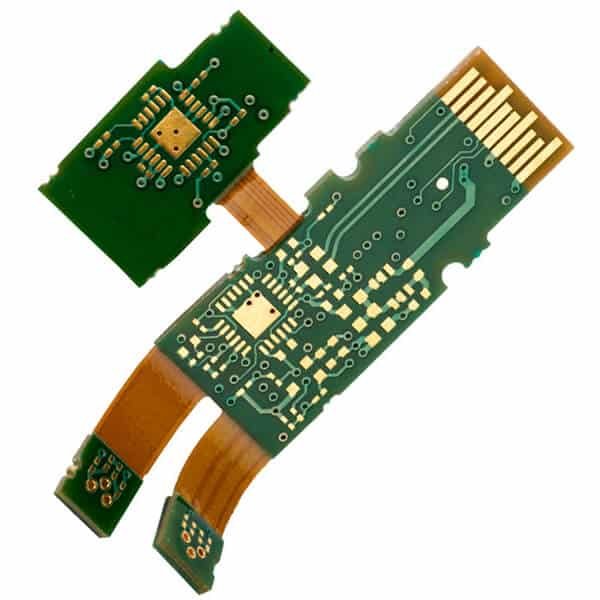
Rigid-Flex PCB Applications Unveiled
Rigid-Flex PCBs are integral in sectors demanding compact, efficient designs. Their unique structure supports innovations in wearable tech, medical devices, and aerospace, allowing for devices that bend, fold, or curve. This adaptability is crucial for modern, sophisticated electronics, pushing the envelope in design and functionality.
Moreover, consumer electronics and automotive industries benefit significantly from Rigid-Flex PCBs. They enable sleeker, more reliable products by minimizing space and enhancing durability. This technology’s role is pivotal in developing future electronics, from smart wearables to advanced automotive systems, demonstrating its vast application spectrum.
Mastery Behind Rigid-Flex PCB Technology and Production
Rigid-Flex PCB technology combines the durability of rigid boards with the adaptability of flex circuits, offering solutions for prototypes and mass production that address space and weight limitations. Early collaboration with fabricators in the design phase can significantly enhance product outcomes, optimizing the integration of design and manufacturing insights for superior functionality.
The manufacturing process for Rigid-Flex PCBs is intricate, requiring specialized handling and processing techniques distinct from traditional rigid board fabrication. This complexity ensures that each component meets the highest standards of quality and reliability, underscoring the advanced craftsmanship involved in bringing Rigid-Flex PCB designs to life.
Benefits of Rigid-Flex PCBs
- Space Efficiency: Enables compact designs by integrating flexible and rigid sections into one board.
- Reduced Weight: Lighter than traditional PCBs, beneficial for portable devices.
- Enhanced Reliability: Fewer solder joints and connectors reduce potential failure points.
- Design Flexibility: Can be folded or twisted, offering creative design options.
- Improved Aesthetics: Seamless integration contributes to sleeker device profiles.
- Cost Savings: Reduces assembly costs by eliminating the need for multiple boards and connectors.
Why Choose Kingsignal for Your Rigid-Flex PCB Production Needs

Choosing Kingsignal for your Rigid-Flex PCB production means partnering with a leader in quality and performance, located in a state-of-the-art 100,000 square foot facility in Jiangxi. Our advanced equipment supports the manufacturing and assembly of standard quick-turn PCBs and Rigid-Flex boards with the strictest tolerances, utilizing special metals for superior results. Kingsignal’s commitment to excellence ensures your projects meet the highest standards in the industry.


